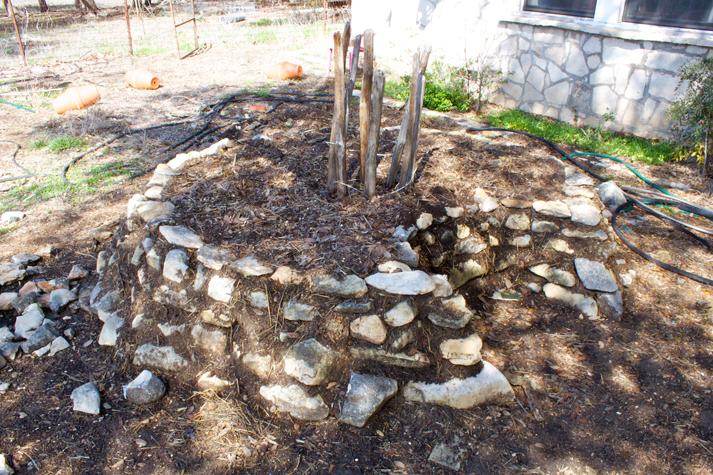
 17
17





 6
6





Idle dreamer




 5
5








 1
1




Idle dreamer
 3
3









Chris Dean wrote:Todd -- I wonder too if that works, or how well it works. I'm inclined to believe it works great because of the origin--I don't think Africans in poverty would waste materials and time on things they didn't know to work, but this might not be accurate thinking. (a note after writing that: not meaning to assume that Africans or even those in the video are automatically in poverty. The video comes from a charity organization that teaches people in poverty to grow a garden with materials they have, hence my connection.)
I believe this deserves a trial
 4
4




 5
5










 1
1




Roman Milford wrote:Wouldn't the compost "basket" soon clog up, plus there would minimal airflow, right?
Baldwin Organic Garden Share Our home-based garden cooperative. Tribal Wind Arts Rustic Furniture & Artisan-Craftwork from reclaimed suburban trees





 3
3
















A human being should be able to change a diaper, plan an invasion, butcher a hog, conn a ship, design a building, write a sonnet, balance accounts, build a wall, set a bone, comfort the dying, take orders, give orders, cooperate, act alone, solve equations, analyze a new problem, pitch manure, program a computer, cook a tasty meal, fight efficiently, die gallantly. Specialization is for insects.
-Robert A. Heinlein








A human being should be able to change a diaper, plan an invasion, butcher a hog, conn a ship, design a building, write a sonnet, balance accounts, build a wall, set a bone, comfort the dying, take orders, give orders, cooperate, act alone, solve equations, analyze a new problem, pitch manure, program a computer, cook a tasty meal, fight efficiently, die gallantly. Specialization is for insects.
-Robert A. Heinlein
 1
1




Devon Olsen wrote:also, chris dean, hows your beds coming, anything growing up and out yet?
 1
1














Devon Olsen wrote:it may look better if there wasn't dirt/cob(if thats what that is) showing between the rock









Idle dreamer




Devon Olsen wrote:interesting indeed!
i definately wouldn't put cememnt between the rocks or anything... and it could be that cob looks better than simply stacking the rocks when in person
i do think that the cob would look amazing if your were near a pine forest or anything, if you were trying to give a straight natural look, i was thinking that in most suburban yards it may look better without the cob though, as cleaner looks prevail in these environments imo
i am building one of these this summer with a large stump in the middle... we'll see what i decide to do with it:)





Idle dreamer












 ). I'd go as cheap as possible, but if the wall was tied into the bed with brick ties or built so it corbels (I think that's the word) back row on top of row 1/8" to 1/4" depending on bed height, you could likely use tumbled pavers (much cheaper) or brick you salvage yourself, though depending on where it comes from, I would be wary of toxicity. I like the idea of using masonry to side the beds, as they should hold more heat longer than just dirt alone, and prevent unwanted erosion.
). I'd go as cheap as possible, but if the wall was tied into the bed with brick ties or built so it corbels (I think that's the word) back row on top of row 1/8" to 1/4" depending on bed height, you could likely use tumbled pavers (much cheaper) or brick you salvage yourself, though depending on where it comes from, I would be wary of toxicity. I like the idea of using masonry to side the beds, as they should hold more heat longer than just dirt alone, and prevent unwanted erosion.A human being should be able to change a diaper, plan an invasion, butcher a hog, conn a ship, design a building, write a sonnet, balance accounts, build a wall, set a bone, comfort the dying, take orders, give orders, cooperate, act alone, solve equations, analyze a new problem, pitch manure, program a computer, cook a tasty meal, fight efficiently, die gallantly. Specialization is for insects.
-Robert A. Heinlein








Yes, I'm that David The Good. My books are here: http://amzn.to/2kYcCKp. My daily site is here http://www.thesurvivalgardener.com and my awesome videos are here https://www.youtube.com/subscription_center?add_user=davidthegood




A human being should be able to change a diaper, plan an invasion, butcher a hog, conn a ship, design a building, write a sonnet, balance accounts, build a wall, set a bone, comfort the dying, take orders, give orders, cooperate, act alone, solve equations, analyze a new problem, pitch manure, program a computer, cook a tasty meal, fight efficiently, die gallantly. Specialization is for insects.
-Robert A. Heinlein
 1
1




Idle dreamer








amarlover Hatfield wrote:could we replace the centre with bamboo (pushed thru w pipe etc) or a PVC pipe w holes or drainage pipe w holes?




 3
3









|
Whoever got anywhere by being normal? Just ask this exceptional tiny ad:
permaculture and gardener gifts (stocking stuffers?)
https://permies.com/wiki/permaculture-gifts-stocking-stuffers
|




